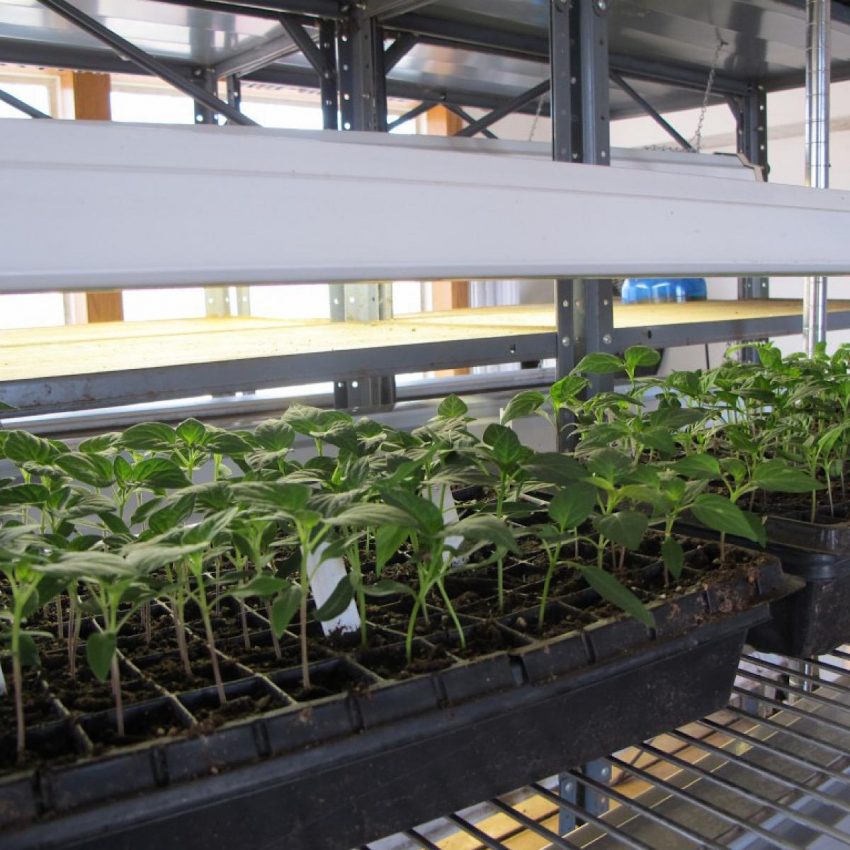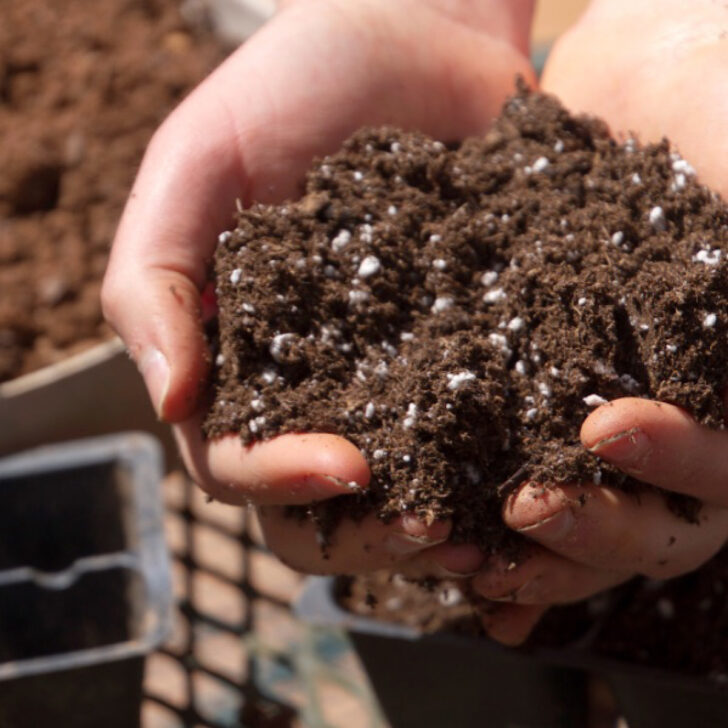On our small farm I start our tomato and vegetable seeds from a homemade organic mixture, but I grow seedlings at a large scale as I am growing for the farmers’ markets. If you just want a few vegetables for your backyard garden or if you are growing produce in a balcony garden, you may want different options.
I have included two recipes for making your own potting soil, as well as recommendations for buying commercial potting soil. The choice will vary depending on your specific gardening situation.
Whether you go with homemade or commercial potting soil however, please take note of the steps below to prevent damping-off disease.

Jump to: Homemade Potting Soils | Commercial Potting Soils | Damping-Off Disease
This post may contain affiliate links. As an Amazon Associate, I also earn from qualifying purchases. You can read our disclosure information here–
Best Homemade Potting Soil for Seed-Starting
If you are a 100% organic grower, you can make your own potting mix (but it is a bit involved). I have tried several recipes, and my favorite combination for organic homemade potting mix is listed below. I grow hundreds of seedlings for the farmers markets, so you may need to scale down proportionally for smaller batches however.
I purchased the individual ingredients for my mixture from a local feed store. I’ve included another homemade potting soil mixture below with ingredients that may be easier for you to find.
My Own Homemade Organic Potting Soil
- 5 gallons compost
- 5 gallons peat
- 3 – 5 gallons mix of vermiculite & perlite
- 1/2 cup lime (don’t use this if your compost is horse manure as the beds are often limed)
- 1/2 cup bonemeal
- 1/2 cup bloodmeal
- 1/2 cup greensand (or 1/4 cup sul-po-mag)
Typical Homemade Potting Soil Ingredients:
- 1 part sterilized bagged potting soil
- 1 part peat moss or coir fiber
- 1 part perlite or vermiculite
- 1 part compost
Directions for either mixture:
Moisten all ingredients and mix together thoroughly in a large clean tub. Feel the texture and if it feels heavy and sticky, add a little more peat moss. If it feels too light, add more compost.

I have also written a detailed article on starting your own tomato and pepper seeds indoors, if you want a comprehensive read on all things seed starting.
Commercial Potting Soil Recommendations
If you are starting a container garden with large pots, purchasing bagged products might be a better option for you. It takes a lot of space to mix up bulk potting soil and it can be very heavy to cart upstairs to a balcony garden.
The best thing to do if purchasing commercial potting soil is to become familiar with the labels. Make sure it is labeled as a potting soil and not a garden mic, topsoil, or straight compost.
Ingredients to look for in a good commercial potting soil would include:
- compost
- perlite or vermiculite
- sphagnum peat moss
It is your decision whether to look for water-holding granules and time-release fertilizers. Some people prefer to add fertilizers and control the moisture content themselves.
When I don’t have the time to make my own potting soil mixture, I have found that Miracle-Gro Moisture Control is a potting soil that gives consistently good results for both seed starting and growing in containers.
Tip: The bag of soil should be light, as heavy bags may have too much sand or they could be saturated with water.
Preventing Damping-Off in Starting Seeds Indoors

If you have ever started your plants indoors from seed, you have probably experienced a common problem called damping-off. This is when seedlings that are only a few days old suddenly shrivel and die, or just fall over.
If you take a close look at the seedlings you will usually see that the roots have rotted, or a dark spot of rot has developed on the main stem.
The culprit behind damping-off is fungi that may appear if you are using garden soil for your potting soil. Soil that comes straight from your garden often carries disease-promoting fungi that is hard on young seedlings, but doesn’t necessarily harm older plants or plants sowed directly in the garden.
Damping-off is caused by different fungi, and it is most often fatal, but the good news is that it is entirely preventable. Here are the steps I have found useful in preventing damping-off:
- Make sure your seed starting containers are thoroughly clean, especially if you are reusing containers from the year before.
- Use a sterile potting soil that contains vermiculite and peat moss. Do not use regular garden soil.
- Start with small containers (I use very small plug trays that have 128 plugs per tray and then pot up to 4″ pots when the seedlings have several sets of leaves.
- Go easy on the watering. If you can, water from the bottom. I water from the top, but with very minimal amount of water, pretty much just a dribble actually. Check the bottom tray to see if the water has seeped through to the tray. If so, you have watered too deeply.
- Keep grow lights close to the seedlings, only 1-3 inches away.
- Have a fan blowing across the tops of the seedlings to help their stems become sturdy. You may have heard about “tickling your seedlings” with your hands. Tickling the seedlings and a gentle fan on them has the same effect.
Now….give seed starting a try. You can grow so many more exciting varieties when you start plants from seed. Plus, it’s a great sense of accomplishment to watch something grow from beginning to end!
If you like my articles about cooking and gardening, subscribe to my weekly newsletter, where I share free recipes and gardening tutorials.


Leave a comment